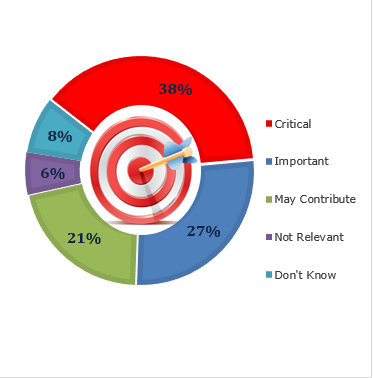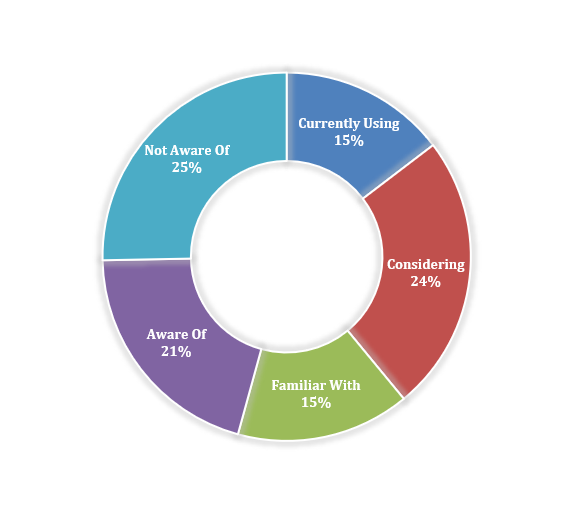Low-code: The best “new” technology breakthrough

Digital transformation gaps
Digital transformation is creating new value for manufacturers. The digital revolution, whether under the banner of Industry 4.0, Smart Manufacturing, or some more overarching initiative, is a high priority to survive and thrive in the new normal. Even before the disruption from the recent pandemic, Tech-Clarity’s research on the digital maturity in manufacturing shows that two-thirds of industrial companies viewed digitalization as either “important” or “critical” to achieving their business strategy.

Our recent survey, Filling Digital Transformation Gaps with Applications, shares that manufacturers’ digital initiatives create or uncover process, organizational, and technology gaps. They must overcome these “digital transformation gaps” to achieve their digitalization goals, such as driving internal efficiencies, creating new business models, or finding new revenue opportunities.
Filling digital transformation gaps
The urgent need to fill these gaps means that companies must be able to develop more applications, and do it faster than they have in the past. Our survey shows that 96% of industrial companies say the speed they need to create and implement new software has increased. This puts tremendous pressure on IT because backlogs prevent their companies from digitally transforming and reaching their business goals.
Low-code helps fill the gaps
Companies are looking for ways to accelerate application development. Many have been able to improve development productivity by adopting lean, agile approaches. Another approach that’s getting a lot of buzz as a way to further these improvements is low-code development. Low-code is proving to be a valuable tool, although not many industrial companies are using it yet. Our research discovered that only 15% of recently surveyed manufacturers are using it, although another 24% are considering it.

While low-code is not commonplace today, those that use it are finding significant value in it. In particular, our survey found that companies that use low-code find it easier to fill their digital transformation gaps. This creates an opportunity for them to gain competitive advantages over competitors by introducing new applications that help them meet their digital transformation – and business strategy – objectives.
A “breakthrough” technology
Some see low-code as a promising new technology, but is it really? New technology? No. Promising for the digital transformation? Despite the fact that a full 25% of industrial companies aren’t aware of it, it’s not new. The low-code approach has gone by different names, including model-based programming. In fact, I first wrote about it with Olin Thompson of Process ERP Partners in 2003 in a series of Technology Evaluation articles titled “What’s Wrong with Application Software.” In that we pointed out that “Early adopters are learning that Model Based Architectures create significant efficiencies throughout the application lifecycle.”

Jim Brown in 2003 (when the original article published)
Perhaps we were overly ambitious about how early those early adopters were!
At that time, we said “Research by universities is validating both the approach and the effectiveness. Model based architectures deserve to be on an enterprise’s ‘technologies to watch’ list.” Now, digital transformation is demanding the application development efficiencies that low-code offers.
Despite the amount of time, the core value hasn’t changed. Using model-based programming techniques, as we identified all of those years ago:
- Allows business / users to get involved in defining solutions
- Fosters better collaboration between the business and IT
- Provides faster development
- Offers more agility and ability to change
The time for low-code has arrived
What has changed, other than grayer hair in my bio picture, is the readiness and availability of the solutions. Much like other digital technologies, they have become more mature and supporting technologies are now available on a mainstream basis.
Instead of being discussed in the realm of academia, there are numerous case studies about how it’s adding value today. The approach now helps companies prototype, develop, test, deploy, and integrate higher value applications at greater speed. It also helps them incorporate new technologies to augment or replace legacy solutions that are slower to change. For example, they can use low-code to incorporate artificial intelligence or augmented reality to extend the value of existing data.
Taking advantage of low-code to fill gaps
The combination of increased low-code maturity and greater application development demand due to digital transformation, makes this the time for low-code techniques to reach their potential. The pace of change isn’t going to slow down. Digital needs will continue to grow, creating gaps in existing solutions and requiring companies to respond quickly.
As we said over a decade ago “Model based architecture is … a tool that leverages existing applications and fills in the cracks that exist in your business processes.” That’s even more applicable today, given the higher demand – and value – of rapid application development in the digital era. It’s time for more manufacturers to adopt low-code in order to meet their critical digital transformation needs. Fortunately, it’s well suited to start small, prove the value, and grow. It’s time to get started.
Read the full research study by Tech-Clarity, Filling Digital Transformation Gaps with Applications.


